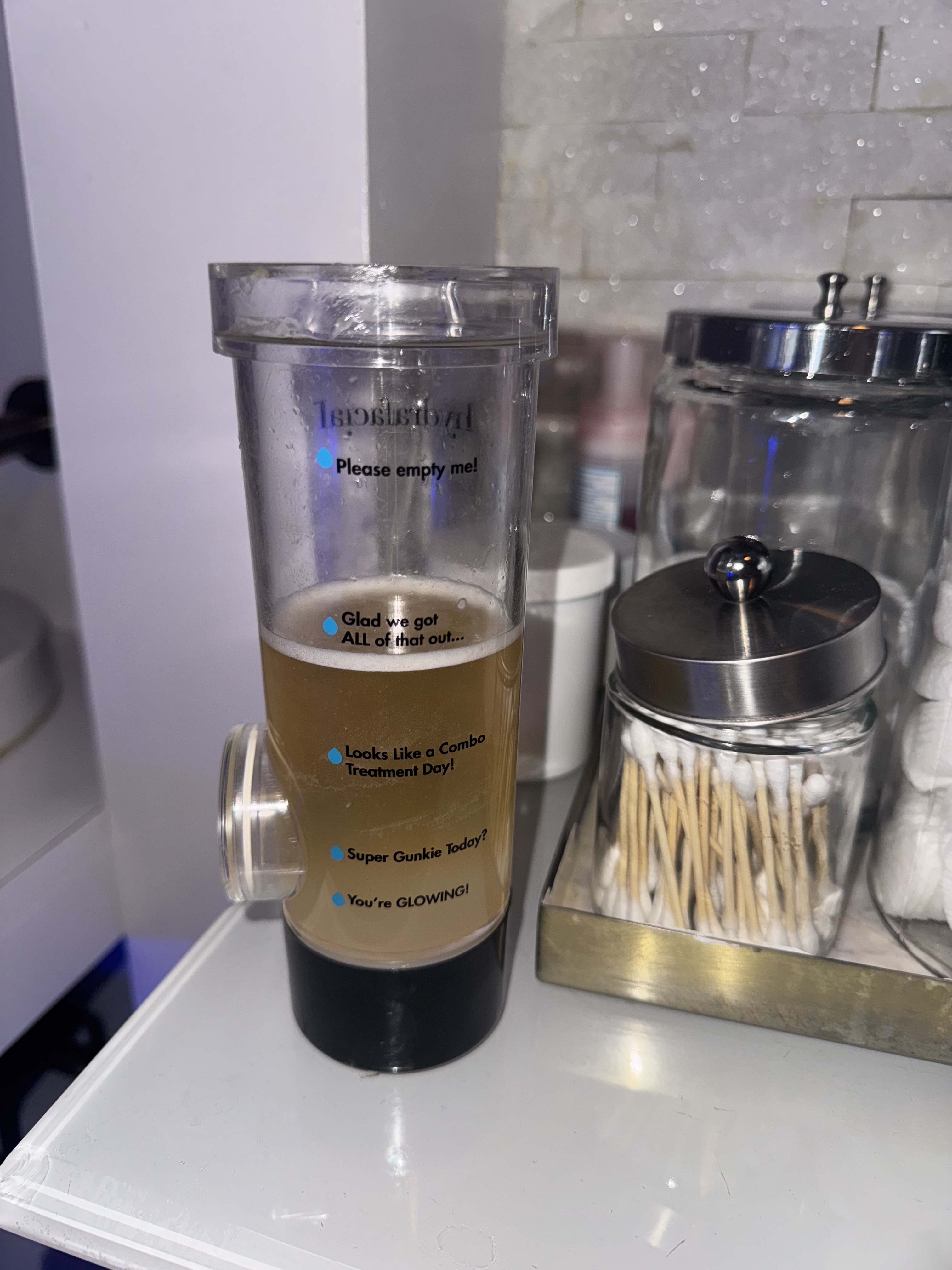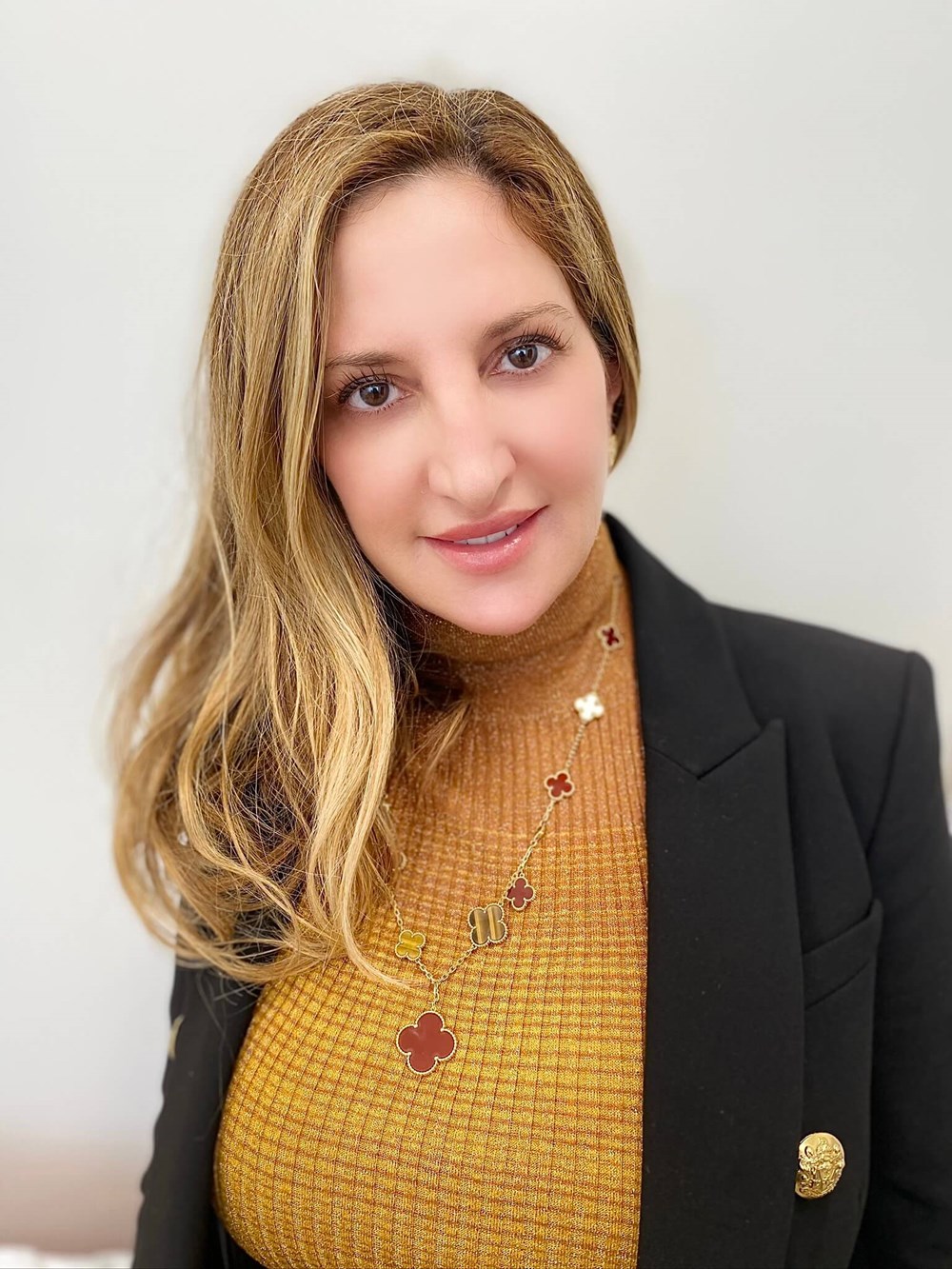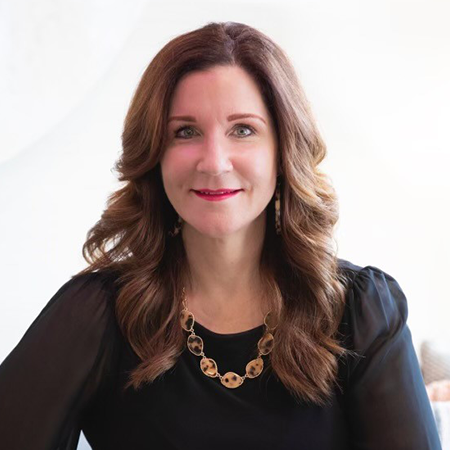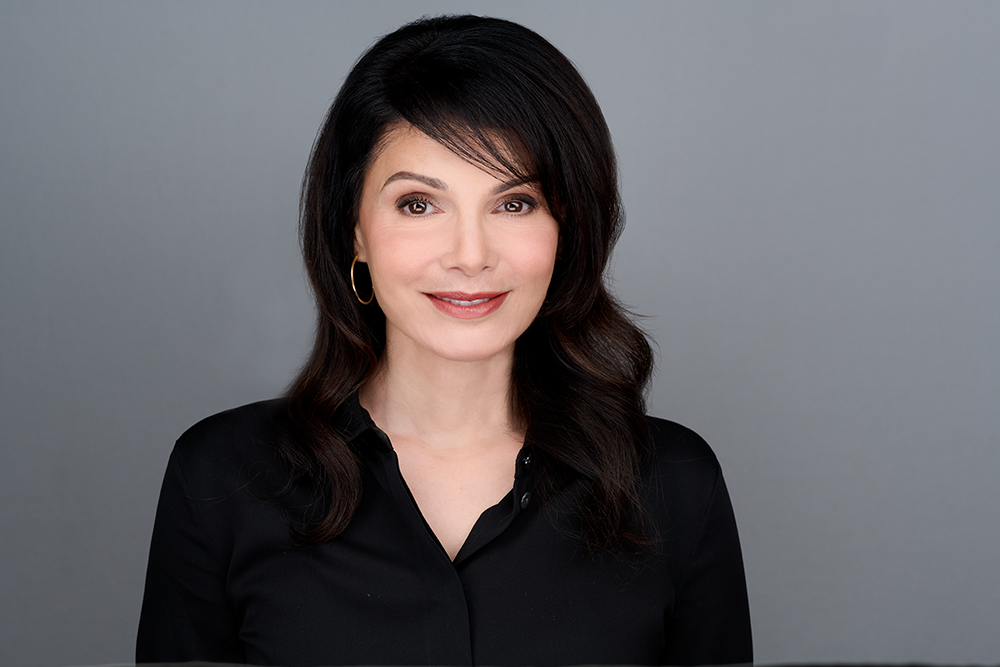A Hydrafacial Is My Beauty Editor Secret for Glass Skin and Invisible Pores
Squeaky clean in 45 minutes.

- What Is a HydraFacial?
- What Are the Benefits of a HydraFacial?
- Are There Risks Associated With a HydraFacial?
- Who Is a Good Candidate for a Hydrafacial?
- Do I Need to Change My Skincare Routine for a HydraFacial?
- How Often Should I Get a Hydrafacial?
- How Much Does a Hydrafacial Cost?
- Do Hydrafacials Hurt?
- Can I Do HydraFacials with Other Treatments?
- My HydraFacial Review
Sometimes my skin hates me. It chooses to rebel in a variety of ways, including but by no means limited to: dry patches, clogged pores, and complete and utter dullness. Switching up my skincare routine can help, but when it comes to a quick fix, I always choose to take a trip to my derm’s office or a medispa for a Hydrafacial. While I repeatedly profess my love for Hydrafacials (the benefits are beyond), people always ask me: What is a Hydrafacial, exactly? Does it hurt? Will I break out? Is it dangerous?
Simply put, a Hydrafacial is actually a specific type of machine used by dermatologists and estheticians that works in four steps: It cleanses and exfoliates the skin, extracts gunk (you even get to see the grossness that was sucked out at the end, which in my opinion, is oddly satisfying), and hydrates your complexion. “The entire treatment takes about 45 minutes and clients leave absolutely glowing,” says Deirdre Strunk, licensed esthetician and Vice President at Canyon Ranch.
While I can personally attest to the fact that the benefits of this treatment are the real deal, knowing the nitty-gritty details are important before signing yourself up. To get the breakdown on every question you could possibly have, I talked to a handful of beauty industry pros. Here, they’re laying it all out: from who’s a good candidate for the treatment to which skincare infusions you should ask for during your Hydrafacial.
What Is a HydraFacial?
For starters, there’s no at-home variation of a Hydrafacial. It’s a medical-grade, in-office treatment that's administered by a licensed and trained professional. That being said, make sure you do your research on who will be doing your Hydrafacial. When it comes to the actual process, Strunk explains that the first step is to cleanse the skin. That’s followed with gentle exfoliation using a mix of glycolic and salicylic acid to reveal a new layer of skin. “We then remove dirt and impurities from your pores with gentle suction,” she explains. While the whole thing is “completely pain-free,” there is a bit of noise in the background that can be a bit jarring.
Once all the gunk is removed, your skin is primed to get the most benefits out of any skincare applied thereafter. That’s where the infusion process comes into play. “From here, the treatment is entirely customizable with boosters and serums designed with specific skin concerns in mind,” adds Strunk. All in all, the whole shebang is going to take around 30 minutes to an hour.
A post shared by HydraFacial (@hydrafacial)
A photo posted by on
What Are the Benefits of a HydraFacial?
The biggest plus with a Hydrafacial is that, unlike some other intense facials, there’s absolutely zero downtime and no pain involved. Typical extractions can leave the skin red and irritated from pushing and pressing, but thanks to the device’s suction power (it's almost like a pore vacuum), the skin remains calm. “When clients leave the treatment room, they immediately see a glow that lasts for several days or weeks,” says Strunk. The skin might be a tinge red, and it’s best to avoid makeup directly after, but by and large, you can go about your day as usual.
Another benefit? The treatment is completely customizable. While cleansing, exfoliation, and extractions serve as the baseline, suction power and the level of acid used are up to your esthetician. Then, the boosters can be individually cocktailed to deliver specific benefits, including brightening, firming and restoring, smoothing and refining, hydrating, calming, or clarifying. Hydrafacial works with various skincare brands like SkinCeuticals, Murad, and more, so you can even decide exactly what products are being put on your skin.
Get exclusive access to fashion and beauty trends, hot-off-the-press celebrity news, and more.
Bonus: Hydrafacial isn't just for your face. "The Hydrafacial device can truly be used almost anywhere on the body. HydraFacial can cleanse, exfoliate, and hydrate the skin on your back, hands, neck, and décolletage—even the derriere," explains Hydrafacial's Executive Vice President of Global Strategy and Partnerships Jwala Karnik, M.D. "HydraFacial also offers PERK lip and eye treatments, which are specially designed to treat the skin in these delicate areas. The PERK lip treatment can plump and hydrate your lips, and the PERK eye treatment is specifically designed to tighten, moisturize, and hydrate the delicate skin around the eyes."
Are There Risks Associated With a HydraFacial?
Aside from some potential redness, the side effects are pretty minimal and low-risk—that’s what makes the Hydrafacial so enticing. With that in mind, you may experience some breakouts following the treatment. “Because Hydrafacial leverages a combination of salicylic and glycolic acids, which go into the skin and help loosen debris and unclog pores in tandem with the vacuum action, it is possible that consumers might see a few blemishes afterward. While this can happen after any extraction treatment, it’s not a typical side effect," says Dr. Karnik.
Who Is a Good Candidate for a Hydrafacial?
Since the Hydrafacial is so customizable, it’s a good option for anyone looking for a little pick-me-up. It works across all skin tones and types—from those that are super dry to oily and acne-prone. "Hydrafacial treatments are safe for all skin types, ages, genders. However, we’d suggest avoiding a Hydrafacial if you have an active rash, sunburn, or have especially irritated or sensitive skin from using certain topical ingredients," says Dr. Karnik. "It’s always best to consult with your provider if you’ve recently had injectables or laser treatments or have other active skin concerns."
Do I Need to Change My Skincare Routine for a HydraFacial?
You’re not going to need to make any crazy changes to your routine, but Strunk does recommend going off of any prescriptions or over-the-counter skincare products with retinol four to five days before your Hydrafacial. This will minimize any potential irritation. Following the treatment, she suggests using a gentle face wash, moisturizer, and sunscreen.
How Often Should I Get a Hydrafacial?
Because the benefits are immediate, you’ll see results after just one session. For consistent and long-lasting benefits, though, Strunk suggests getting a treatment once a month. That way, you can alternate boosters depending on your skin at a given point in time. Hydrafacials are also easy to get while traveling. “It is so consistent and repeatable, regardless of the location,” she adds.
How Much Does a Hydrafacial Cost?
The cost of your treatment is going to depend on two main factors: location and duration. But overall, a Hydrafacial should fall within a range of $150 to $300.
Do Hydrafacials Hurt?
Not at all! The device either administers product onto the skin or extracts dirt and oil from pores—both of which are completely painless. "In fact, Hydrafacials feel very good and invigorating for the skin," says board-certified dermatologist Tracy Evans M.D., MPH.
Can I Do HydraFacials with Other Treatments?
Not only can you get a Hydrafacial with other facial treatments, but the procedure actually pairs very well with many services, including dermaplaning and chemical peels. "I recommend my patients to alternate Hydrafacials with laser treatments, but you can definitely do a Hydrafacial on the same day as Botox or fillers," says Dr. Evans. The device will not affect your botox or filler, but she does recommend getting the Hydrafacial first.
My HydraFacial Review
I reserve facials for very special occassions. Given the state of my dry skin (this New York City winter is no joke) and clogged pores along my T-zone (I may or may not be going a little too hard on facial self tanner), I was due to give my face a little TLC—and hopefully restore at least a semblence of glow.
When it comes do a do-it-all facial, I'd heard buzzings from beauty editor friends that a Hydrafacial was the way to go, so I visited Skinney Medspa in New York City for the treatment. The facial began with a simple cleanser before diving into a light exfoliant. It felt a little scratchy, but not painful or irritating in the slightest. Next, the machine applied a chemical peel onto my skin to start the pore-clearing process. Finally, it was go time.
My specialist carefully sucked all the dirt and oils out of my face using a little nozzle-like attachment (see above) that was able to glide across flat surfaces and fit into crevices along my nose. I felt a little physical exfoliation but didn't experience any burning or stinging.
She applied a moisturizing mask and LED light to re-hydrate my skin following the exfoliation and deep pore cleanse. I lay with both simultaneously seeping into my skin for 10 minutes.
As the cherry on top of the treatment, she went back in with the Hydrafacial device to apply an antioxidant-filled serum. With one quick peak in the mirror, my jaw fell to the floor at the result. My skin had a glass-like finish to such an intense degree that I could literally see my own reflection on my forehead. It was firm, and my pores were tight, without feeling taut or uncomfortable. The best part? The insane glow lasted all day long.

Bonus: I got to see all the gunk that was extracted from my face, which was as equally disgusting as it was fascinating. Overall, my HydraFacial experience gets a 10 out of 10. The entire treatment took about an hour, and the long-lasting results were worth every second.
Meet The Experts

Dr. Evans is a board-certified dermatologist, a skin cancer specialist, a fellowship-trained Mohs surgeon, and a trusted provider of cosmetic procedures. She works diligently to balance the important connection between the medical and aesthetic qualities of skin. By using holistic approaches when possible and focusing on overall health and wellness, Dr. Evans helps her patients achieve radiant, glowing skin that bring out their confidence. Dr. Evans graduated with honors, Phi Beta Kappa, from Vassar College in New York. She earned her master’s degree in public health and medical degree from University of Connecticut. She then went on to conduct skin cancer research for the National Institute of Health for two years. Dr. Evans completed her dermatology residency at Emory University in Atlanta, GA and was fellowship trained and certified by the American College of Mohs Micrographic Surgery and the Accreditation Council of Graduate Medical Education at the University of Pittsburgh Medical Center. In addition to her practices in San Francisco and Corte Madera, she has presented at multiple national and international meetings for her research on cost, quality of life, and skin cancer outcomes.

At Cal-a-Vie Health Spa, Dr. Strunk's focus is on maintaining the stature as the pinnacle of French-inspired beauty in Vista Valley, all while driving revenue growth through innovative wellness programs. The recent strategic initiatives implemented under her leadership have not only enhanced guest experiences but have also streamlined operations across Cal-a-Vie and The Havens Country Club. Her dedication to exceptional service is a testament to the professional development and industry training that are the cornerstones of her career.

Dr. Karnik joined HydraFacial as the Chief Medical Officer in June 2023 after working as their EVP of Global Strategy & Partnerships starting in April 2021. Although, she has been an advisor to HydraFacial since 2017. Prior to joining the company, she served in operational and strategic roles within aesthetics for over 14 years working with large and small companies and was the Chief Medical Officer for Suneva Medical. She was previously an entrepreneur-in-residence with Versant Ventures, focused in aesthetics, and was a leader in McKinsey & Company’s West Coast Healthcare Practice. She completed her medical fellowship training at UCSF, received her MD from University of California San Diego, and a BA from UC Berkeley.

Samantha Holender is the Senior Beauty Editor at Marie Claire, where she reports on the best new launches, dives into the science behind skincare, and shares the breakdown on the latest and greatest trends in the beauty space. She's studied up on every ingredient you'll find on INCI list and is constantly in search of the world's glowiest makeup products. She's constantly tracking the biggest nail and hair trends to pop up in the beauty space, going backstage during fashion weeks, tracking celebrity looks, and constantly talking to celebrity hair stylists, nail artists, and makeup artists. Prior to joining the team, she worked as Us Weekly’s Beauty and Style Editor, where she stayed on the pulse of pop culture and broke down celebrity beauty routines, hair transformations, and red carpet looks. Her words have also appeared on Popsugar, Makeup.com, Skincare.com, Delish.com, and Philadelphia Wedding. Samantha also serves as a board member for the American Society of Magazine Editors (ASME). She first joined the organization in 2018, when she worked as an editorial intern at Food Network Magazine and Pioneer Woman Magazine. Samantha has a degree in Journalism and Mass Communications from The George Washington University’s School of Media and Public Affairs. While at GWU, she was a founding member of the school’s HerCampus chapter and served as its President for four years. When she’s not deep in the beauty closet or swatching eyeshadows, you can find her obsessing over Real Housewives and all things Bravo. Keep up with her on Instagram @samholender.

